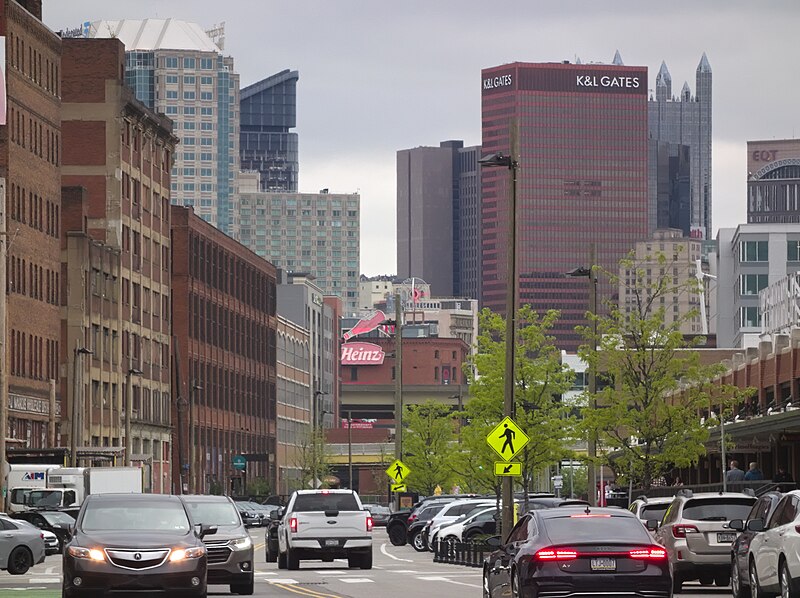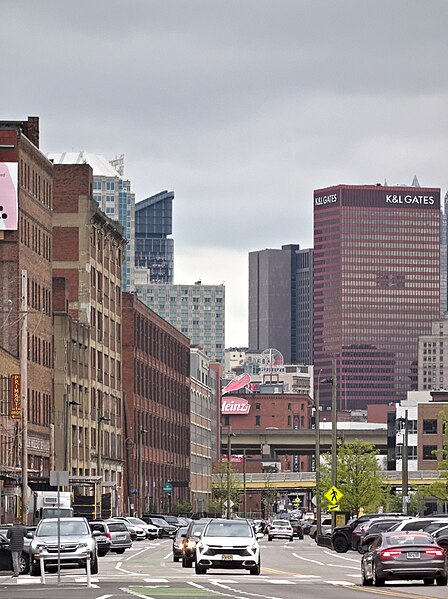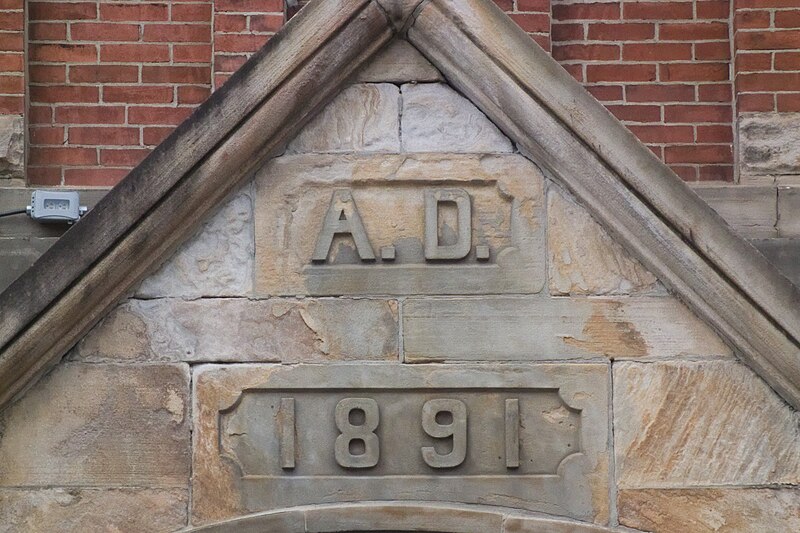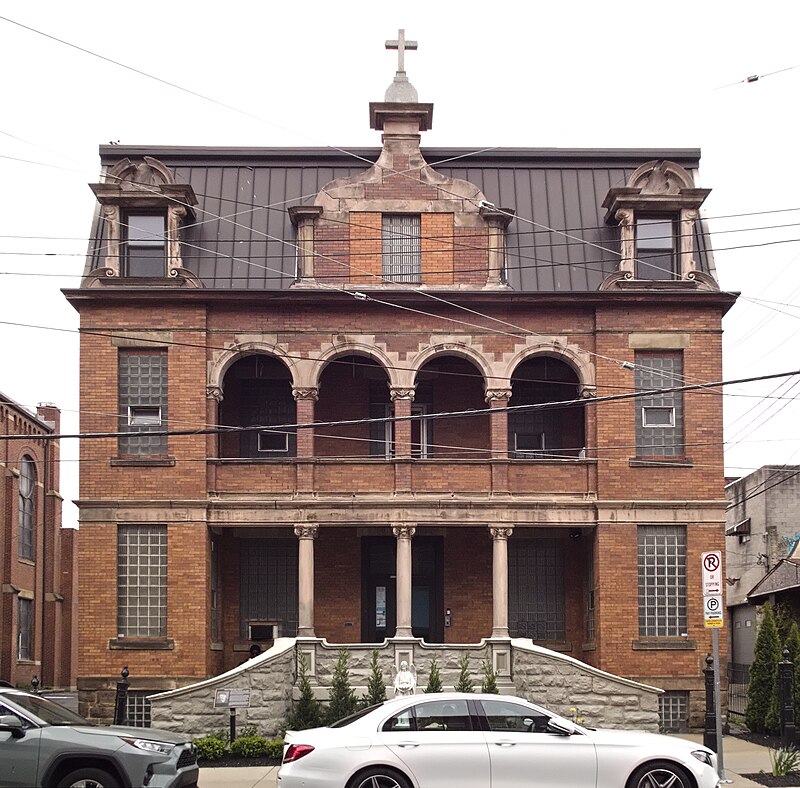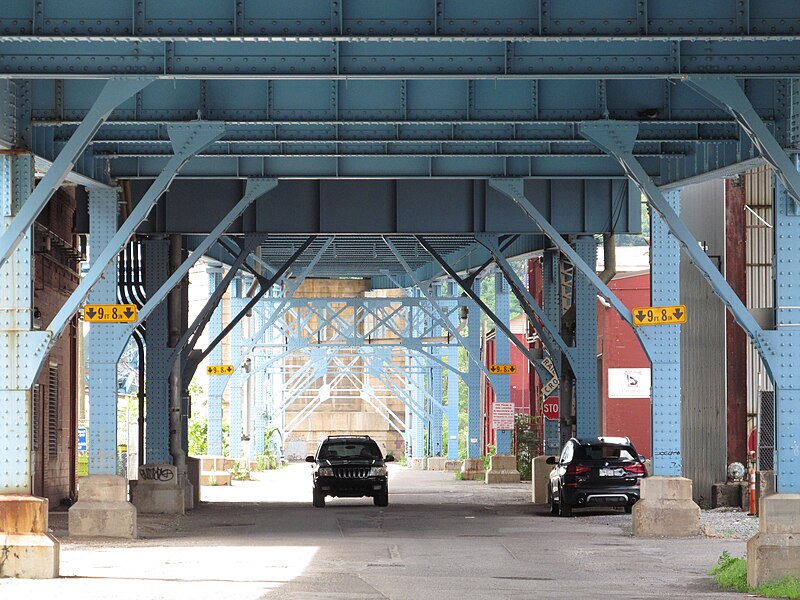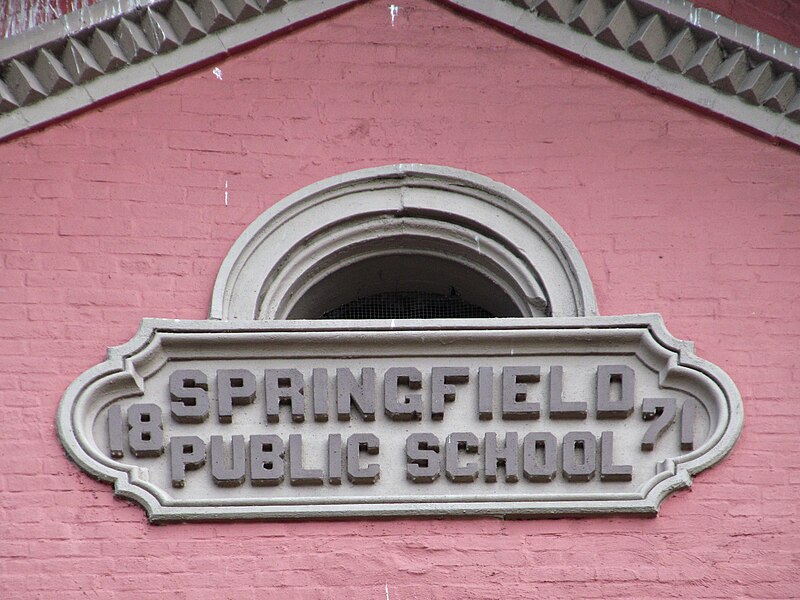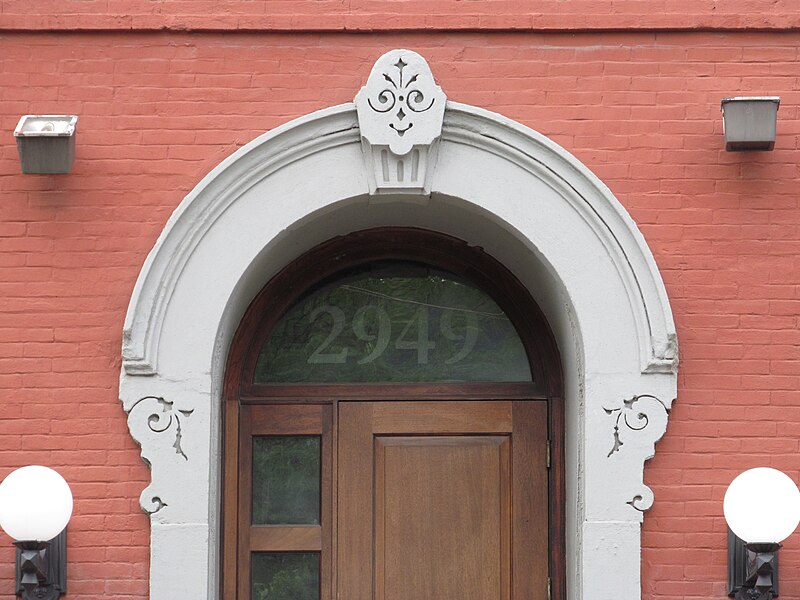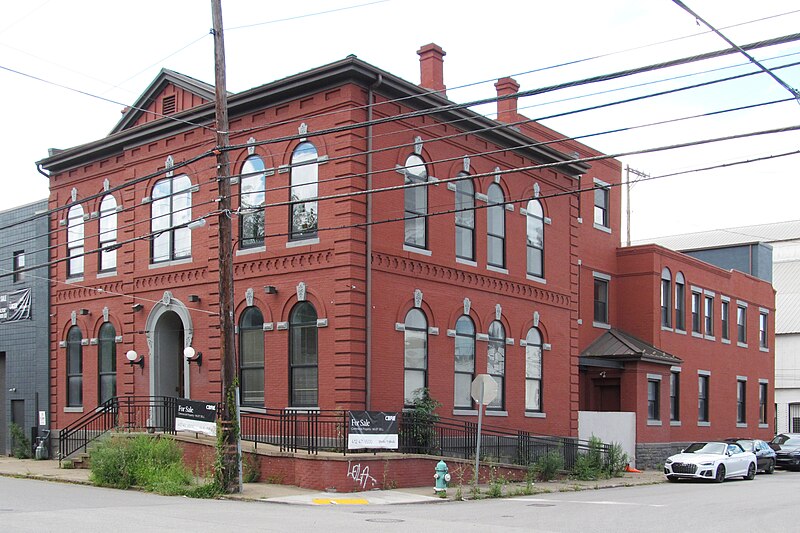
In the old days, many streets in Pittsburgh had trains running right down the street—even Liberty Avenue downtown. Railroad Street in the Strip is one of the few streets left with an active railroad. From this long-lens picture, we can see that the idea of “gauge” in tracklaying allows for a good bit of literal wiggle room.
By state law, streetcars in Pennsylvania were not allowed to use standard-gauge track, because legislators very sensibly worried that some backroom deal between the transit company and the railroad would suddenly have freight trains rolling down residential streets everywhere. Even now, the streetcars in Pittsburgh and Philadelphia run on “Pennsylvania broad gauge.”









